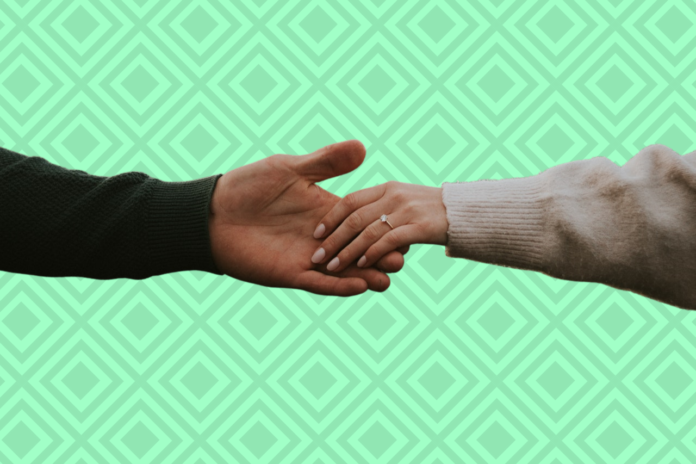Do you often find yourself longing for a midday siesta? Have you ever wondered if this habitual capitulation to the Call of the Couch during daylight hours is a cause for concern? And most pertinently, is this daytime sleepiness a sign that something is amiss, or is it a perfectly natural response?
To get on top of those questions, let’s jump into bed with the crux of the matter, roll around a while, and make an attempt to demystify the phenomenon of daytime drowsiness.
Why Do I Always Need To Nap During The Day?
First and foremost, the desire for a daytime nap does not automatically equate to an underlying health issue. In some cases, there’s a very good reason to take one. Many of us may be working long hours, juggling multiple tasks, or simply not sleeping well at night, leading to tiredness during the day.
Our bodies are biologically programmed to often feel tired in the afternoon, primarily due to our natural sleep-wake cycle, commonly known as the circadian rhythm. A dip in energy levels post-lunch is a normal part of this cycle, and a quick nap can help to revitalise us.
Sleep disorders are another factor to consider. Conditions such as sleep apnoea, insomnia, and restless legs syndrome can disrupt our night-time slumber, instilling an overwhelming sense of fatigue during the day.

Why You Shouldn’t Feel Guilty About A Daily Nap
However, it is not all doom and gloom. There is a silver lining to this midday muddle. If regulated appropriately, daytime napping can even have health benefits. A study from the Endocrine Society found that a quick 30-minute nap could reverse the hormonal impact of a night of poor sleep.
Moreover, a nap can improve cognitive functioning, from enhancing memory to boosting alertness. The guys over at NASA are pro-nap, too, finding that a brief nap can increase productivity by as much as 34% and overall alertness by 54%. Clearly, napping is not a habit exclusive to cats and toddlers!
Depression, stress, and certain medications can also make you feel sleepy during the day. Conversely, if you work the night shift or have an irregular sleep schedule, your body’s circadian rhythm can be thrown off, causing you – perhaps unsurprisingly – to feel tired at unusual times.
The Evolutionary Case For Napping
Our propensity for midday rest may be deeply rooted in our evolutionary history. Anthropological evidence suggests that our ancestors likely practiced polyphasic sleep—sleeping in multiple sessions throughout a 24-hour period rather than in one consolidated block. This natural rhythm, still observed in many hunter-gatherer societies today, allowed for heightened alertness during dawn and dusk when predatory threats were most active.
The modern abandonment of this natural sleep pattern in favor of a rigid eight-hour nocturnal schedule is a relatively recent development, coinciding with industrialization and artificial lighting. Perhaps our bodies are simply requesting what they’ve been evolutionarily programmed to need when we feel that afternoon drowsiness. Rather than fighting against this natural rhythm, working with it could potentially lead to improved overall wellbeing.

What Is The Perfect Length Of Time, Position & Place For A Nap?
The perfect nap is a bit of an individual affair, but there are some general guidelines to follow.
Duration: The most beneficial length for a nap depends on what you need from it. A short nap, about 20-30 minutes, can improve mood, alertness, and performance, without leaving you feeling groggy or interfering with nighttime sleep.
However, if you’re looking for a deeper recharge, a 90-minute nap can help improve creativity and emotional and procedural memory, such as learning how to ride a bike. Waking up after REM sleep (90 minutes) usually means a minimal amount of sleep inertia.
Placement: As for the best place to nap, ideally it ought to be somewhere cool, quiet, comfortable, and dimly lit to help promote sleep. If you’re at home, your bedroom could, of course, be perfect, though don’t be lulled into sleeping for too long in there! If you’re at work, you might find a quiet room or even reclining your car seat can do the trick.
Timing: When to nap can be vital to reap the benefits of the downtime. The best time for most people to nap is midafternoon, around 2 or 3 p.m. This is when people naturally have a dip in energy levels due to their internal biological clock, or circadian rhythm. Napping later than that could interfere with nighttime sleep.
To Alarm Or Not To Alarm?: Setting an alarm can be a good idea when napping, especially if you’re aiming for a short 20-30 minute power nap to boost alertness and performance. This can prevent you from slipping into deeper stages of sleep and experiencing sleep inertia, that feeling of grogginess and disorientation that can come from waking up from a deep sleep.
Remember, though, the perfect nap can vary from person to person depending on their sleep needs and lifestyle.
When Your Regular Need For Napping Might Be A Cause For Concern
That said, continually feeling excessively tired throughout the day warrants medical attention. Hypersomnia, narcolepsy, or chronic fatigue syndrome could be some of the potential culprits. Persistent fatigue could also hint at underlying health problems such as anaemia, diabetes, hypothyroidism, or even heart disease.
Talking to your GP or even checking in with a private sleep clinic will help give you a more thorough, comprehensive picture of whether your tiredness is a cause for concern.
The Risks Of Self-Medicating
Resorting to self-medicating to combat sleepiness is a growing trend. However, misuse of sleep aids and stimulants can lead to serious health issues.
While sleep aids can help with sleep disorders, prolonged use can result in dependency and side effects like memory and digestive problems. Moreover, the ‘sleep’ from medication is typically less restful than natural sleep, leaving users feeling more tired.
Striking The Right Balance
So, how can you strike a balance? If you’re nodding off regularly during the day, it may be time to assess your lifestyle. Adopt a regular sleep schedule that ensures you’re getting the recommended 7-9 hours of sleep each night.
Incorporate physical exercise into your routine, and consider your diet, as some foods can make you feel more tired than others. Limit caffeine later in the day and create a tranquil environment conducive to good sleep at night.

The Cultural Context Of Napping
The attitude toward napping varies dramatically across different cultures, offering fascinating insights into how societies value rest and productivity. In many Mediterranean and Latin American countries, the siesta tradition has been woven into the cultural fabric for centuries. In Spain, though the formal nationwide siesta has declined in urban centres, many businesses still close during the hottest hours of the day (typically 2-4 PM), allowing workers time to rest or enjoy a leisurely meal.
In Japan, the practice of ‘inemuri’ (睡眠中) — literally ‘present while sleeping’ — represents a unique cultural approach to napping. Rather than being viewed as laziness, falling asleep at work or in public can be interpreted as a sign of diligence; you’ve worked yourself to exhaustion. This socially acceptable form of napping even has its own etiquette, with practitioners remaining in an upright position to demonstrate they’re merely taking a brief respite.
China has embraced workplace napping to such an extent that many companies include a designated rest period after lunch, with employees often keeping small pillows in their desk drawers. While not explicitly mandated by law, this midday rest period (often called ‘wujiao’ or noon break) is a deeply ingrained cultural practice in many Chinese workplaces. In some Chinese offices, the lights automatically dim after lunch, and some modern companies even provide dedicated nap rooms or convertible furniture designed to facilitate comfortable resting.
These diverse cultural approaches remind us that our attitudes toward napping are not universal truths but social constructs. Perhaps by borrowing some wisdom from these nap-positive cultures, we can develop healthier relationships with rest in our increasingly sleep-deprived society.
The Bottom Line
A daytime nap is not inherently bad. However, excessive sleepiness that affects your ability to function normally should be taken seriously. So, do not shy away from that appealing nap if you truly need one. But remember, moderation is key, and good sleep hygiene is golden.
Sweet dreams (or should that be daydreams?)!
*This blogpost is for informational purposes only and not a substitute for professional medical advice. Any lifestyle, diet, or sleep routine changes should be consulted with a qualified health professional specific to individual needs.*




